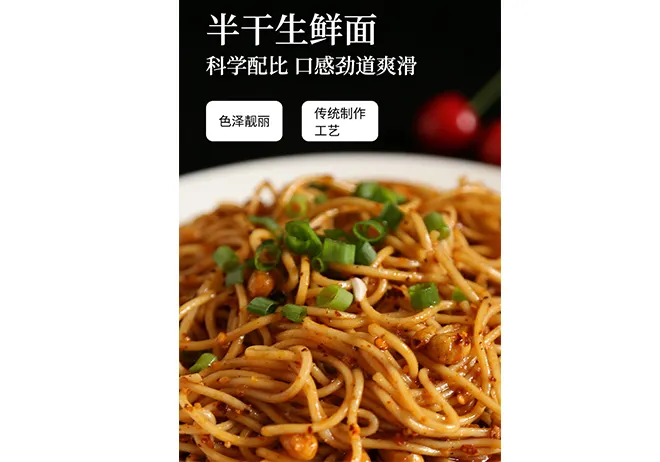what is the difference between udon and soba
The Difference Between Udon and Soba A Culinary Exploration
Japanese cuisine is renowned for its diversity and flavor, with a wide array of dishes that appeal to various palates. Among the most beloved staples are two types of noodles udon and soba. While both are integral to Japanese food culture, they possess distinct characteristics that set them apart. This article delves into the differences between udon and soba, exploring their ingredients, preparation methods, flavors, and culinary uses.
Origins and Ingredients
Udon noodles are thick, chewy noodles made from wheat flour, water, and salt. Their origins are believed to trace back to ancient Chinese noodles, eventually adapting into what we now recognize as udon in Japan. The dough is kneaded and then rolled out to create wide, flat strands that can vary in thickness. Udon is known for its absorbent nature, allowing it to soak up the flavors of the broth or sauce it is served with.
On the other hand, soba noodles are made from buckwheat flour, which gives them a slightly nutty flavor and a darker color compared to the pale, smooth udon. Traditionally, soba is made with a combination of buckwheat and wheat flour, but 100% buckwheat soba is also popular, especially among those seeking gluten-free options. Soba’s unique texture and flavor make it versatile and suitable for various dishes.
Preparation and Cooking Methods
When it comes to preparation, udon and soba are prepared quite differently. Udon is often boiled and served in a warm broth, making it a popular choice in winter months. The noodles can also be stir-fried or served cold with dipping sauces in summer. Common udon dishes include *kake udon* (udon served in broth), *yaki udon* (stir-fried udon), and *zaru udon* (cold udon served on a bamboo mat).
Soba, however, can be enjoyed in multiple ways as well. It can be served hot in a broth similar to udon or cold, usually accompanied by a soy-based dipping sauce. Cold soba, known as *zaru soba*, is particularly refreshing in the warmer months. Additionally, soba is often garnished with green onions, wasabi, or other toppings like tempura, making it a versatile dish that can be tailored to individual tastes. Another popular way to serve soba is in the form of a chilled salad, featuring fresh vegetables and dressings, further highlighting its adaptability.
what is the difference between udon and soba

Flavor Profiles
The flavor profiles of udon and soba reflect their respective ingredients and preparation methods. Udon has a mild, neutral taste, which allows it to pair well with a variety of broths and ingredients. It is often seen as comforting and hearty, making it a favorite for many Japanese families.
Conversely, soba’s distinct nutty flavor adds depth to dishes, making it a favorite for those who prefer more robust tastes. The earthy notes of buckwheat can be emphasized with the addition of toppings such as sesame seeds or wild herbs, enhancing its overall flavor experience.
Nutritional Aspects
From a nutritional standpoint, both udon and soba offer distinct benefits. Udon, being primarily made of wheat, is rich in carbohydrates and offers a hearty source of energy. However, soba has the advantage of being lower in calories and higher in protein and fiber when made from 100% buckwheat. This makes soba a favored option for those looking for healthier meal choices.
Conclusion
In conclusion, udon and soba are two incredible Japanese noodle types, each with its unique characteristics, flavors, and culinary applications. While udon is thick, chewy, and versatile, soba offers a lighter, nutty alternative with numerous serving methods. Both noodles are rich in cultural significance and can be featured in a variety of dishes that showcase their distinctive qualities. Whether you’re savoring a warm bowl of udon on a cold day or enjoying a refreshing plate of zaru soba on a hot summer afternoon, both noodles embody the essence of Japanese cuisine and its focus on seasonal and flavorful ingredients.
-
Unlock the Delicious Potential of Yam NoodlesNewsAug.11,2025
-
The Authentic Taste of Lanzhou NoodlesNewsAug.11,2025
-
Savor the Art of Hand Pulled NoodlesNewsAug.11,2025
-
Indulge in the Timeless Delight of Spaghetti BologneseNewsAug.11,2025
-
Indulge in the Rich Flavor of Braised Beef NoodlesNewsAug.11,2025
-
Elevate Your Meals with the Magic of Fresh PastaNewsAug.11,2025
-
Unleash Your Inner Chef with Delectable Italian Pasta CreationsNewsAug.01,2025
Browse qua the following product new the we

















































































































